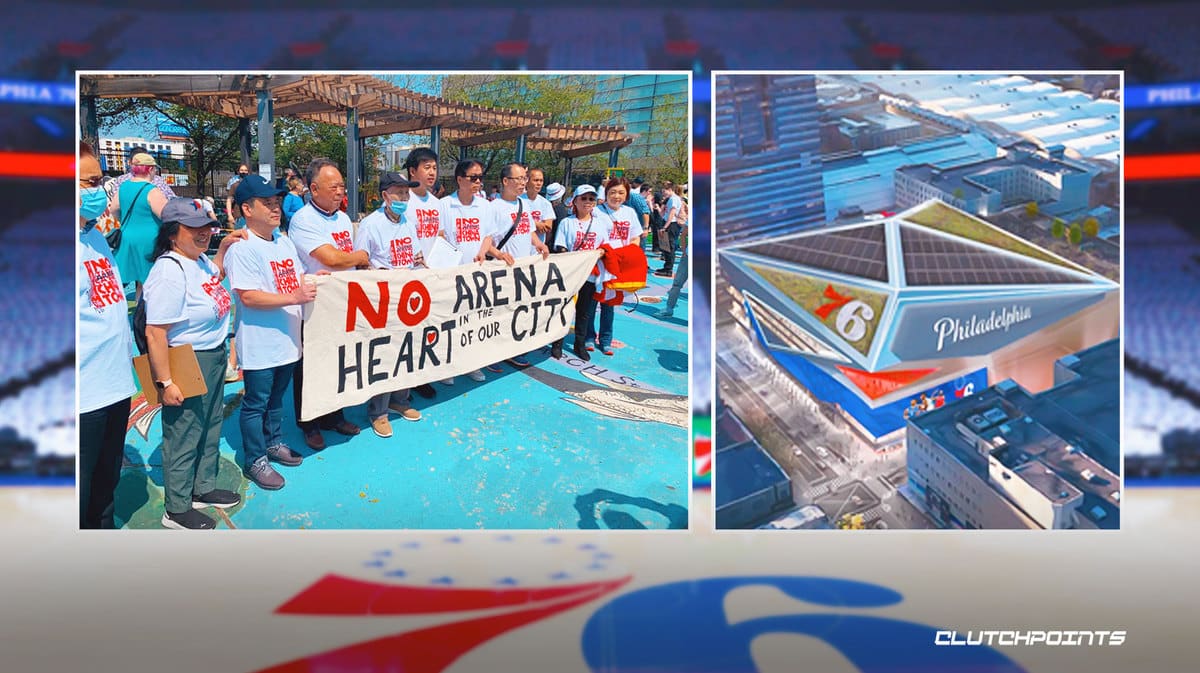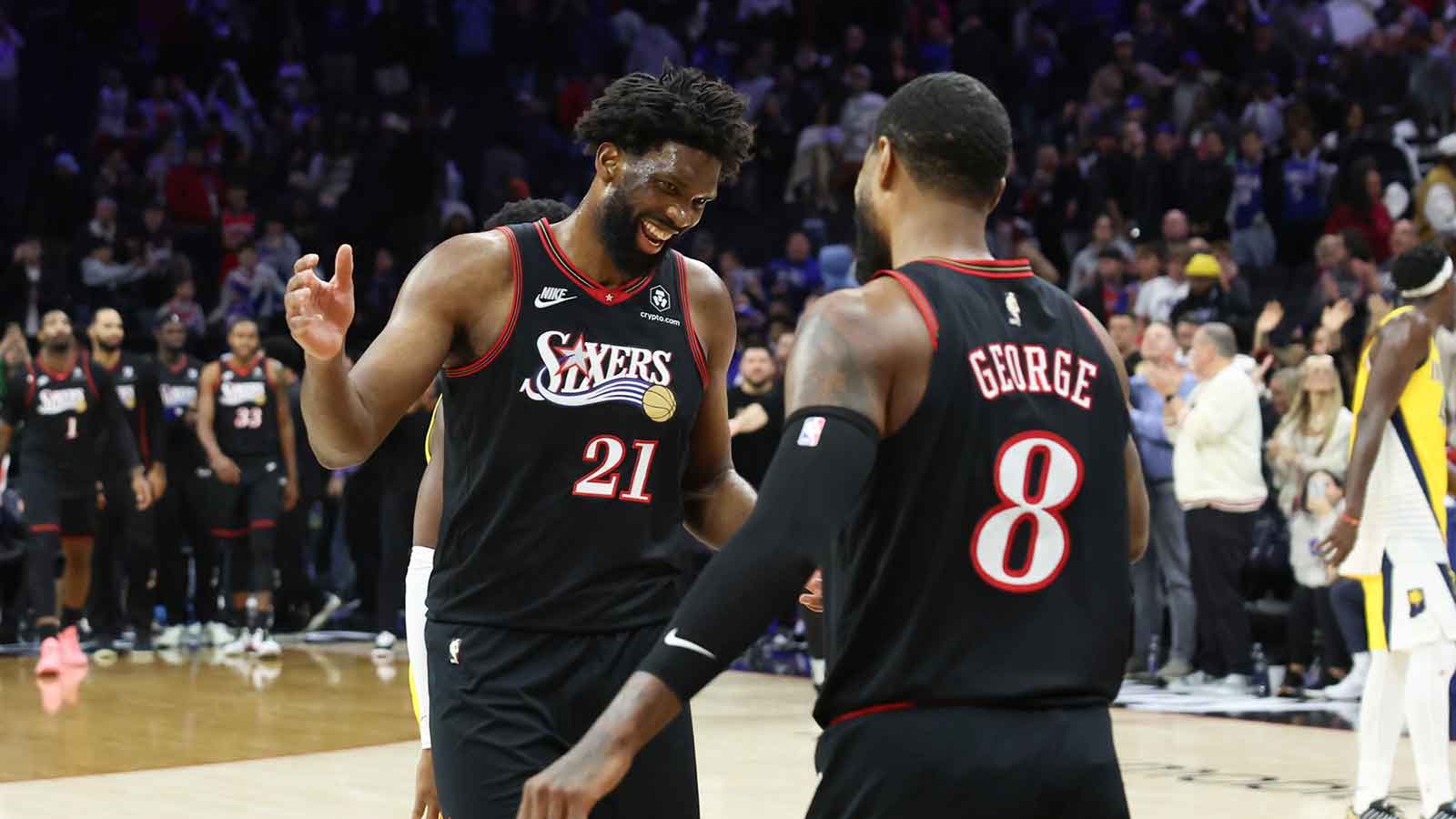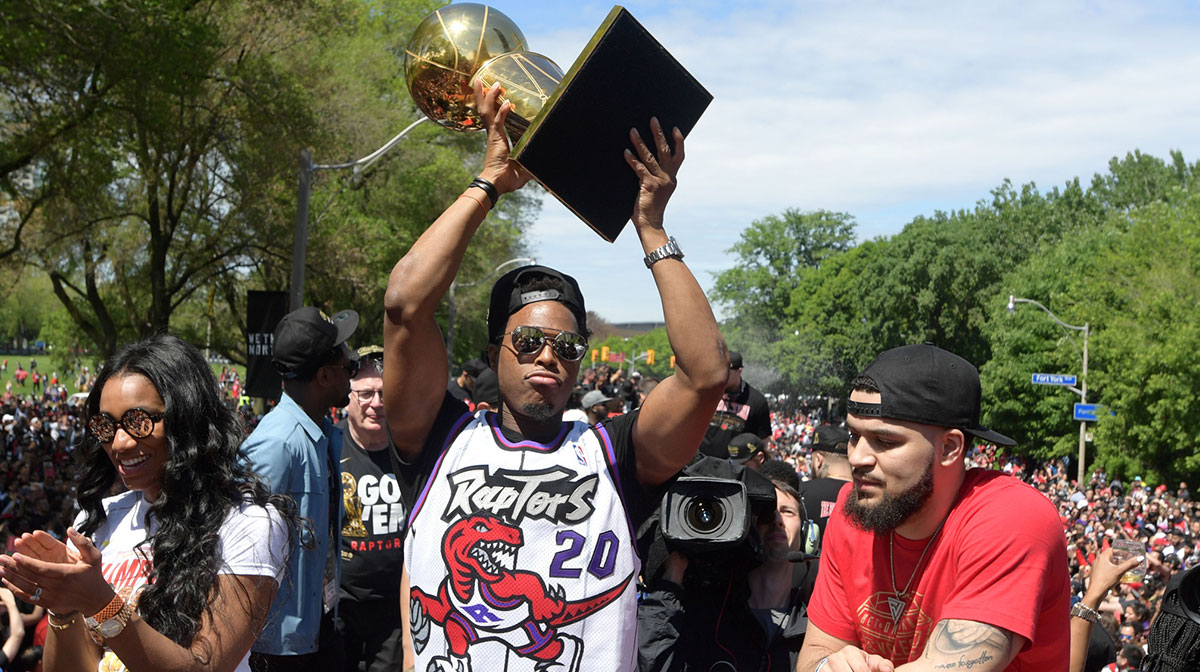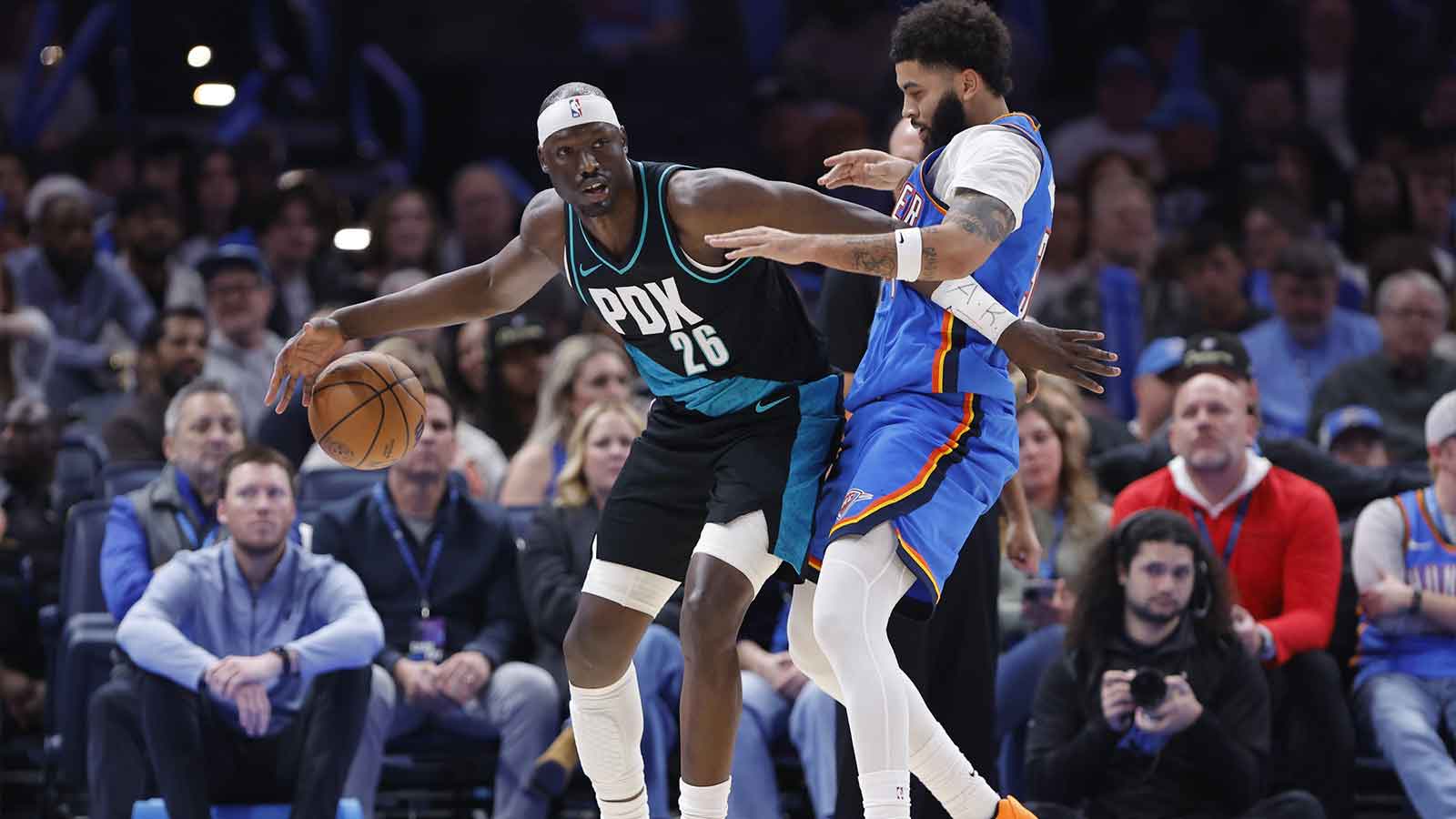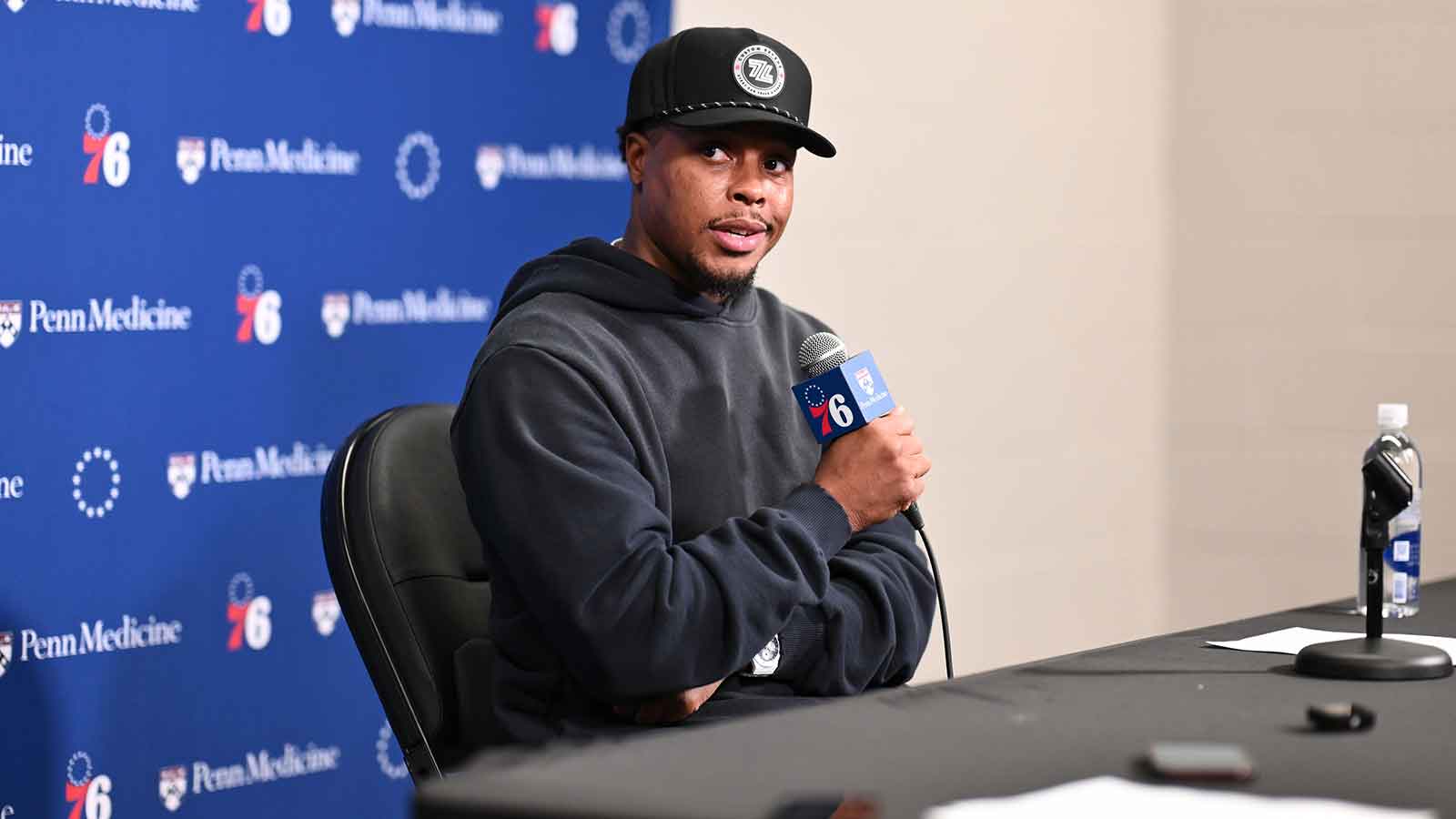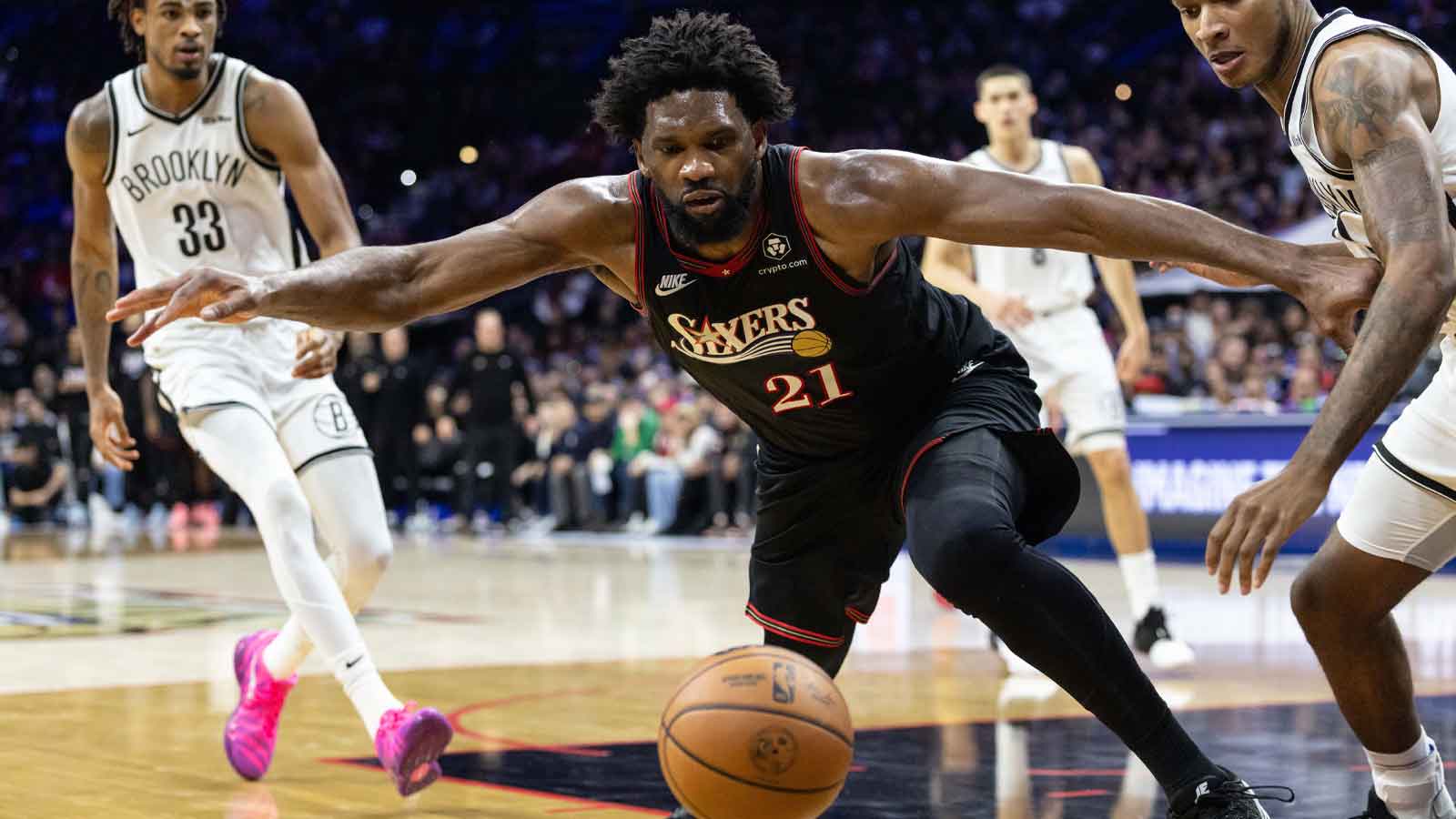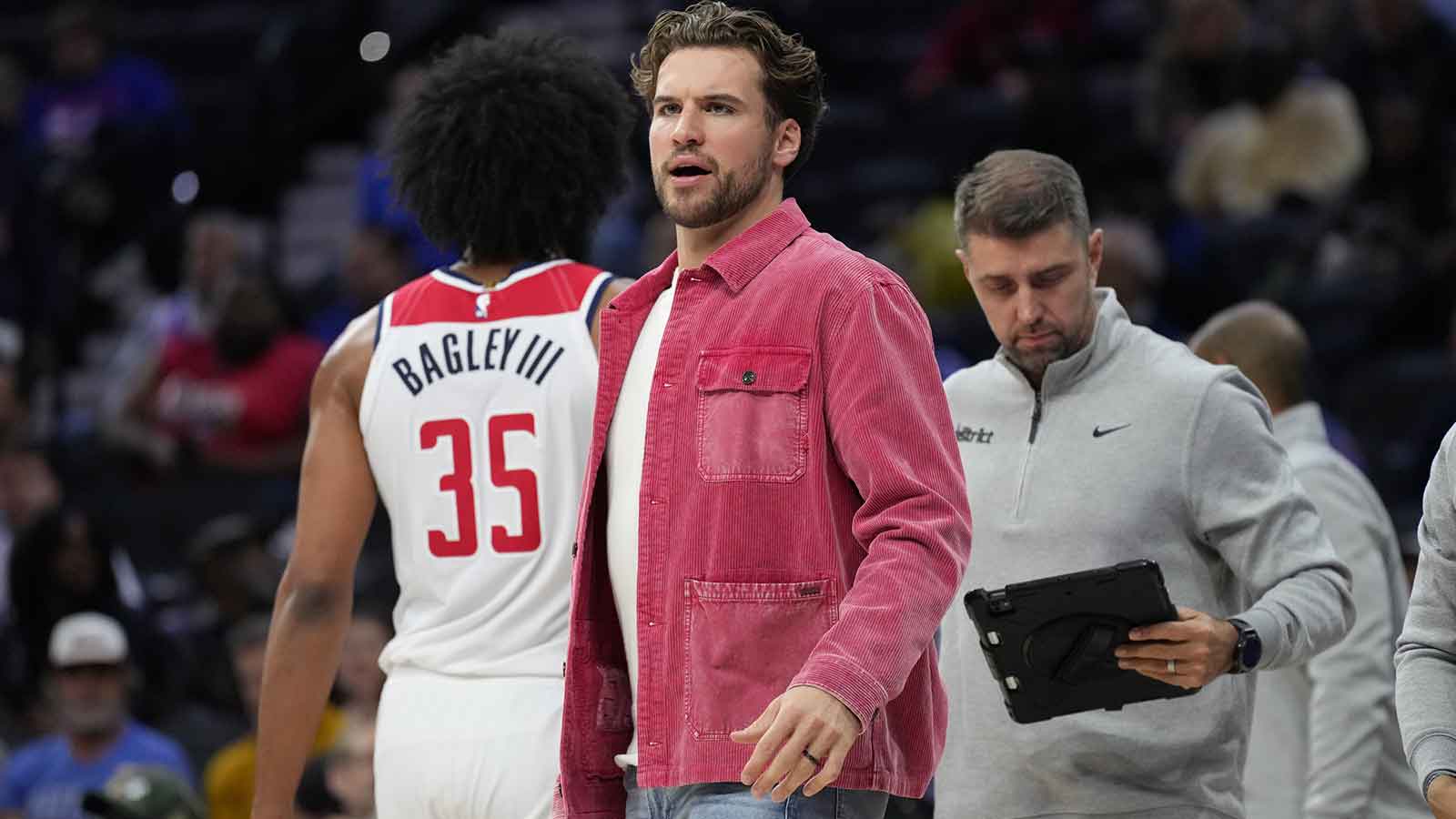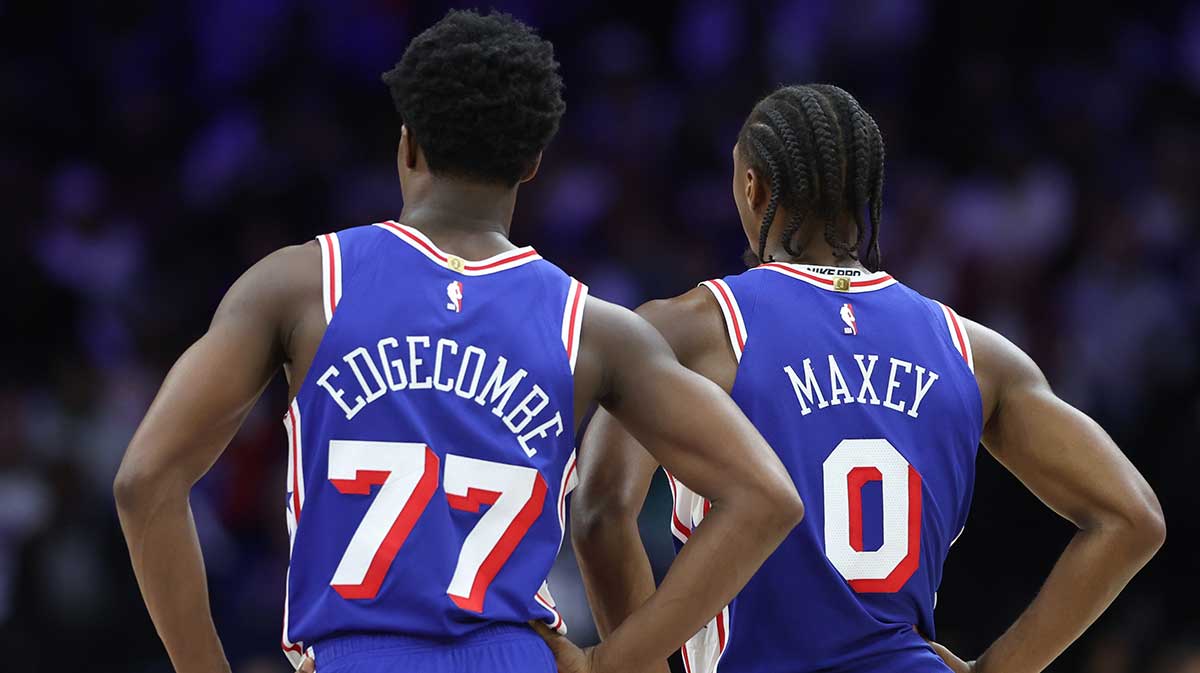PHILADELPHIA — The Philadelphia 76ers are in the process of finding and building a new home. The franchise is eying a move to Center City in 2031 following the conclusion of its lease in Wells Fargo Center with its own arena. The Sixers' proposal has raised concerns from Philadelphia activists due to its proximity to Chinatown, leading to a massive protest in the city.
The proposed arena would be built on Market Street between 10th Street and 11th Street, a space that is currently occupied by the Fashion District mall and located only a few streets from Chinatown. Supporters of the community say that the project brings worries about the displacement of residents and businesses and an abundance of traffic in the area, among other things.
The Sixers declined to comment for this story. The franchise's development company responsible for the arena plans, 76 DevCorp, has listed numerous resources on its website to address common concerns and explain its aims to support the Chinatown community financially and allow its culture to continue unabated.
“They’re coming for our land,” said Debbie Wei, a founding member of Asian Americans United. “They want to take over Chinatown. We're here to tell them ‘no.’ This is not what the community wants. It's not what the community needs.”
Chinatown residents and several other local groups convened at the 10th Street Plaza over the Vine Street Expressway for the “No Arena in the Heart of Our City March and Rally.” The expressway serves as a reminder of ways that their community has been brutalized throughout its history, as its construction during the 19080s split Chinatown. They fear that the Sixers' arena plans are the next venture that will put the community at great risk.
“We'll keep fighting. We'll keep showing,” Wei said, indicating that the protesters will show their opposition to the Sixers' proposed arena. “I think today, we're gonna show very clearly that this community is united.”
Protesters participated in chants, held up signs, and marched through the city to send their message to Philly's elected officials and the Sixers. The crowd was loud and energetic, though there have been numerous figures posited for the number of participants. The size of the crowd was estimated to be around 3,000 people by the organizers. The Philadelphia Police Department Civil Affairs Unit estimated approximately 500 to 700 participants, additionally noting that the rally was peaceful and involved no incidents or arrests.
— Sam DiGiovanni (@BySamDiGiovanni) June 10, 2023
Although the event was not led by one lone individual, one attendee was of significant importance to the group: 96-year-old Chinatown resident Chen Kai Chan, whom Wei says is “a beloved elder in this community” that has been involved in other protests in support of the neighborhood. Young protesters took turns providing shade for him as he shook hands with a few passersby. The strength he showed and has shown in the past empowers those who lead the efforts now.
“When he heard about this — he's 96 — and he said, ‘I have to come. I have to say something. We can’t let this happen. It's my responsibility as an elder to stop this from happening to our community,’” Wei said.
After some opening remarks, the march began down 10th Street. The procession traveled toward Market Street, turned in front of the Sixers' proposed arena site, and made three more turns before concluding on the north side of the City Hall. Countless residents watched from the sidewalk as the march proceeded. On the north end of City Hall, a stage was set up for speakers (and translators) to address the crowd.
The speakers work within different communities and for different organizations. Those who addressed the crowd included Father Joseph Wallace-Williams of the Church of Saint Luke and The Epiphany and POWER Interfaith; Antoinette Miles, the Political Director of the New Jersey Working Families Party; Chris Rogers, an organizer from Black Lives Matter at School; and Tarik Kahn, a state representative serving the 194th Legislative District. During his time at the podium, he took a shot at the Sixers for some of their infamous team-building missteps.
“This is just in a litany of bad ideas from the 76ers, like passing over Jayson Tatum, hiring Doc Rivers and drafting Ben Simmons.”
State representative @TarikforPA takes a shot at the team before discussing the proposed arena’s impact on Chinatown pic.twitter.com/IHSbTC1tjc
— Sam DiGiovanni (@BySamDiGiovanni) June 10, 2023
Miles used the Sixers' practice facility in Camden, NJ as a reason not to trust the arena proposal. “I am here to tell you that the Sixers have already failed the city of Camden,” she said. “How can they be trusted to keep their promises to Chinatown? We do not trust the process.”
Although the Sixers have been involved with several charitable efforts in the city, the facility employs just 11 Camden residents in its 275-person workforce. Miles pointed to this as another way the Sixers have not kept promises, a concern that was also raised by Father Wallace-Williams.
“I’m a diehard Sixers fan but you cannot have an arena in Chinatown,” said Shawmar Pitts, Co-Director & Policy Coordinator of Philly Thrive. “This fight is in my neighborhood, it’s in your neighborhood, it’s in all our neighborhoods and we gotta stop them right now. Bring us a championship but no arena in Chinatown. It’s not happening!”
The Sixers' proposal is not entirely without outside encouragement. Numerous organizations — including the African American Chamber of Commerce, the Eastern Atlantic States Regional Council of Carpenters, the Philadelphia Building & Construction Trades Council, and the General Building Contractors Association — have expressed their support for the new arena and the commercial impact it intends to have.
Much of the arena planning process has been intense, especially in meetings between Sixers developers and the Chinatown community. Chinatown's trust in the developers — which Wei claims was already minimal — started to erode heavily in December of 2022. Unknowing to the public, a Philadelphia City Council bill regarding a parking garage featured a provision that would have made easier the striking of Filbert Street, located on a side of the proposed arena site.
The provision was later removed but the community took issue with its inclusion nonetheless. In a meeting that occurred roughly a week later, the Sixers developers in attendance were met with expletives and left early after being cut off during answers. Numerous organizers took issue with the early departure and wish that David Adelman, the chairman for 76 DevCorp and a Sixers co-owner, was present to be addressed directly.
In a recent interview, Adelman reiterated his plans to help and listen to the community. “I don’t want to be naive to the concerns and I don’t wanna dismiss them,” he said. The Sixers co-owner said that not one person or business will be displaced by the arena's construction and operation.
But for Chinatown residents, pledges of external support are unappealing. Mohan Seshadri, the executive director of the Asian Pacific Islander Political Alliance, rejected the notion that tourism was good for Chinatown and said that the neighborhood is supported aptly by its residents and regular visitors.
The Sixers plan to push ahead with the proposal while Chinatown residents and allies will continue to resist. Until the franchise alters its plans or local residents start to build trust in the developers and their vision for preserving the area, this struggle will persist for years.
“This city is our neighborhood, all of us. And this is a fight for our lives, for our very existence,” said Melvin Hairston, a resident of West Philadelphia's UC Townhomes, which is in the midst of its own negotiations between developers and the city. “Billionaires get their money by building on the backs of the people. But they can’t build on the backs of the people if the people stand up. We stand up until they stand down. No arena — not here, not now, not ever.”

